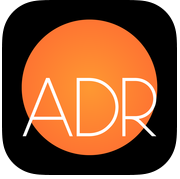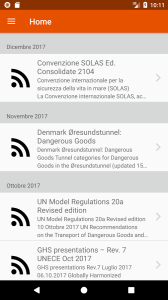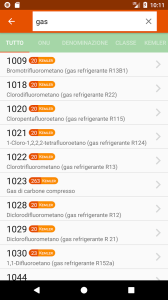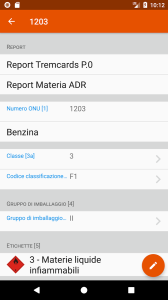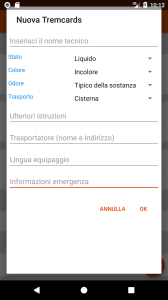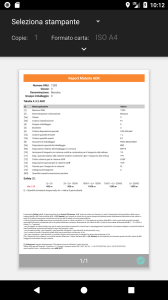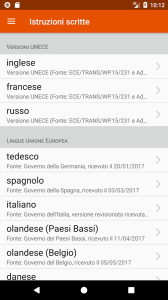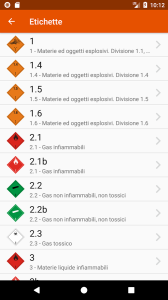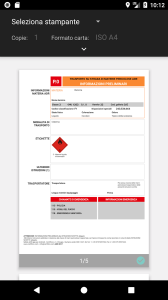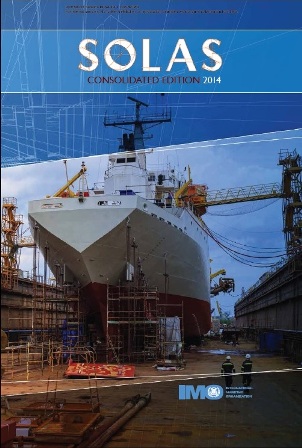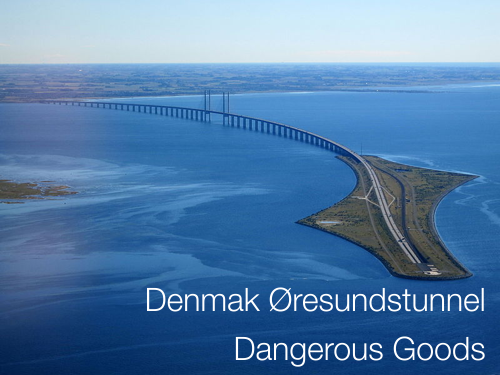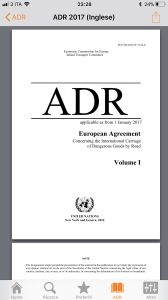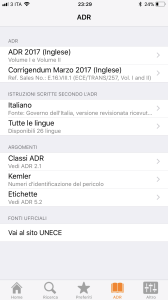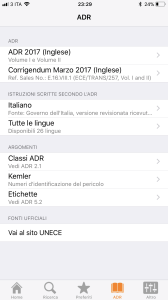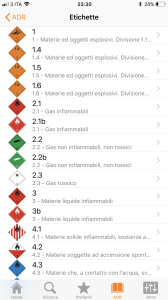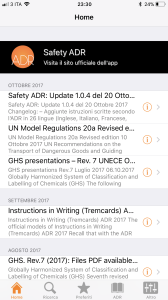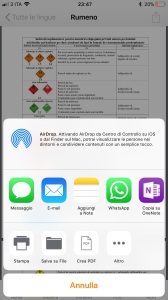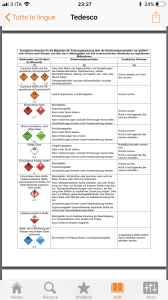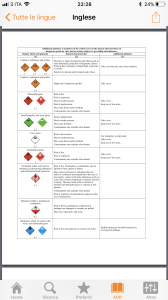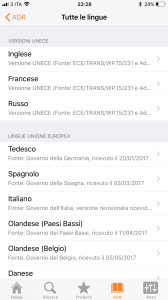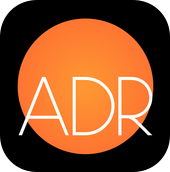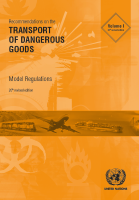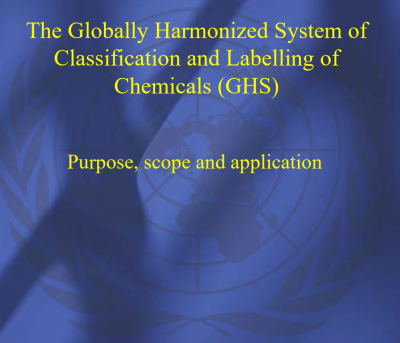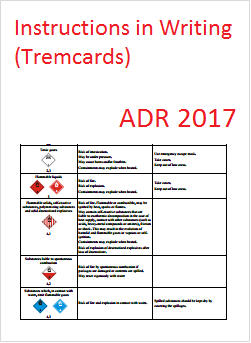Safety ADR© – Dangerous Goods ADR app IT/EN
07.12.2017: Safety ADR now available SO Google Android 5.1 and up.
Safety ADR© app Dangerous Goods ADR
ADR 2017 – European Agreement concerning the International Carriage of Dangerous Goods by Road.
This update version has been prepared on the basis of amendments ADR applicable as from January 1st, 2017.
Safety ADR© is an app that allows you to:
– Search the full table A cap. 3.2 ADR for UN / name / class / other* (Italian, English);
– Fill in the ADR for each subject “Substance Report” with the “Safety” parameter (1) (Italian, English);
– Fill in the ADR for each subject “Tremcards P.0″(2) (Italian, English);
– Read/Print/share/send PDF of Instructions in Writing according to ADR 5.4.2 (English, Italian, French, Russian, Danish, Latvian, Norwegian, Swedish, German, Hungarian, Romanian, Portuguese, Czech, Spanish, Turkish, Slovenian, Slovak, Estonian, Dutch (Belgium), Dutch (Netherlands), Polish, Finnish, Lithuanian, Bulgarian, Greek, Serbian);
– Get news on the home screen;
– Read/Print the ADR agreement (English, French, Russian);
– See ADR labels, classes, Kemler (Italian, English).
The completed documents, “Substance Report” and “Tremcards P.0” can be saved via e-mail in pdf format.
Screenshot Android app:
07.12.2017: What’s news
(1) Safety
The “Safety” parameter for information on the “Safety Area” (S.A.), depends on the quantity “Q” of carried goods and the code “Kemler” corrected by a “K” factor, for which it is believed that the goods to be transported duly bounded to that value in the event of an accident that could pose a risk to public health and safety (carefully read the Disclaimer).
(2) Tremcards P.0
The “Tremcards P.0” (Transport Emergency Cards – P.0) consists of 4 pages: Instruction in writing according ADR + Page “0” of Getting Started Certifico “P.0”.
The “P.0” was introduced in addition to the Instruction in writing according ADR to facilitate a better identification of the goods carried in emergency situation and as indicated in note 2 on page 3 of the Instruction in writing to add “Additional guidance”:
ADR cap. 5.4.3 Note (2) Instruction in writing: “Additional guidance shown above may be adapted to reflect the classes of dangerous goods to be carried and their means of transportation”
Price: € 9,99
In-app Products: € 23,99
Category: Productivity
Date: dec 07, 2017
Version: 1.0.4
Size: 64.2 MB
Languages: English, Bulgarian, Czech, Danish, Dutch, Estonian, Finnish, French, German, Greek, Hungarian, Italian, Latvian, Lithuanian, Norwegian Bokmål, Polish, Portuguese, Romanian, Russian, Serbian, Slovak, Slovenian, Spanish, Swedish, Turkish
Sellers: I certify S.r.l.
© 2004-2017 I certify S.r.l. – Italty
info@certifico.com
+39 075 5997363
Safety and Tremcards P.0 are trademarks of Certifico S.r.l. – Italy.
*The app has only 40 materials ADR , the complete database of ADR materials is purchasable, after installation, by in-app purchase.


